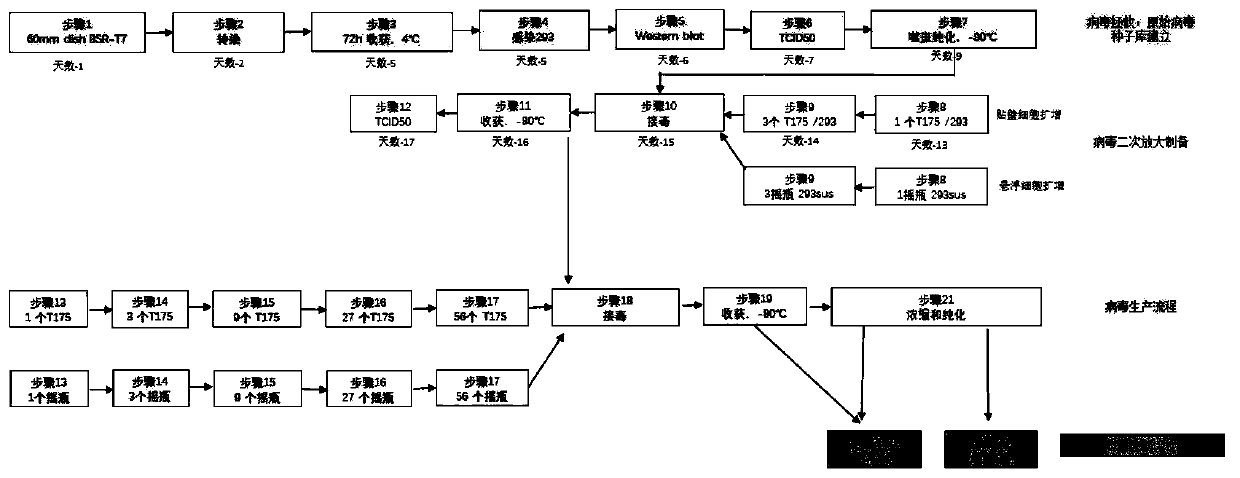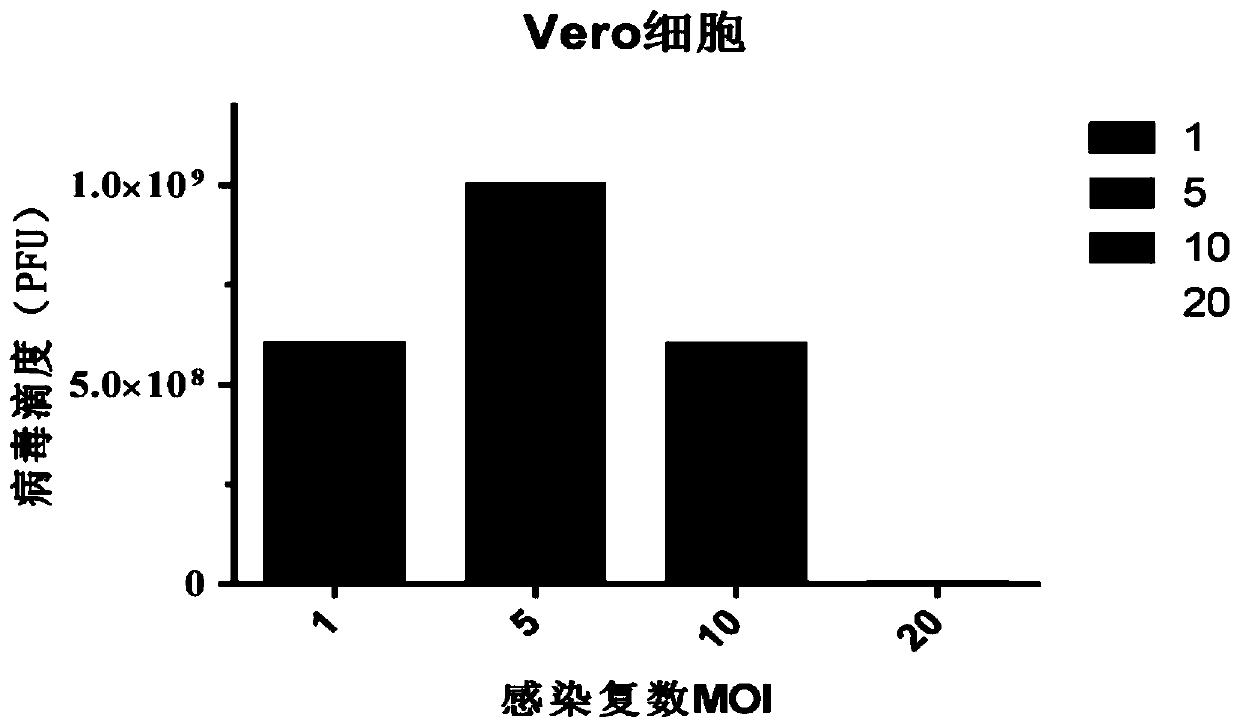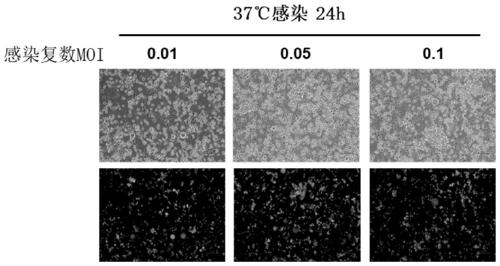Method for preparing oncolytic virus by using 293 cells
A technology of oncolytic virus and oncolytic rhabdovirus, which is applied in the field of biomedicine, can solve the problems of enhancing virus cytolytic activity, etc., and achieve the effects of reducing costs, reducing the possibility of product contamination, and saving labor costs
- Summary
- Abstract
- Description
- Claims
- Application Information
AI Technical Summary
Problems solved by technology
Method used
Image
Examples
Embodiment 1
[0072] Example 1 Vero, 293 adherent cells, and 293sus suspension production cells were infected with inoculated doses of different MOI values, and the changes in the total amount of virus titers obtained from production amplification were compared.
[0073] In Vero and 293 adherent cells, replace the original complete medium with opti-MEM, then infect Vero / 293 adherent cells with VSV virus at different MOI, and replace with complete medium for 48 hours after 2h-3h; 293sus Suspended cells were centrifuged to replace the medium, counted and spread into 6-well plates according to E5 / well, and infected for 24 hours according to different MOI; the supernatant was collected to detect the prepared virus titer (TCID50 ) changes, the overall experimental process refers to figure 1 The specific implementation described in .
[0074] The specific steps of the above experimental process are as follows:
[0075] 1. Vero-E6: Add 2 mL of Vero-E6 cell suspension to each well of a 6-well cul...
Embodiment 2
[0086] Example 2 Further, in order to enhance the infectivity of the virus to cells, PBS, DMEM-0, and opti-MEM were selected as solvents for cell infection as the dilution of U400 virus infection (Vero selects MOI=5, and 293 adherent cells select MOI =0.1)
[0087] Such as Figure 3A , after the cells were congested, replace the original culture medium with PBS, DMEM-0 and opti-MEM in Vero and 293 adherent cells respectively, and then add VSV virus infection at MOI=5 and 0.1 respectively for 2 hours and replace with complete medium culture medium, the supernatant of Vero cells was collected after 48 hours, and the supernatant of 293 adherent cells was collected after 24 hours to detect the titer (TCID50) of the virus produced by the virus strain.
[0088] The specific operation steps of detecting the titer of above-mentioned virus are as follows:
[0089] 1. Vero-E6: Add 2 mL of Vero-E6 cell suspension to each well of a 6-well culture plate to make the cell volume reach 4×10...
Embodiment 3
[0098] Example 3 Effect of Serum Concentration on Virus Production in Culture Medium
[0099] In the process of traditional virus preparation, it will be found that during the amplification process of some viruses, the serum concentration in the medium will seriously affect the increase of virus titer. In order to solve this problem and further increase the virus titer, optimize the virus amplification process, the Vero ( Figure 4A ) and 293 adherent cells ( Figure 4B ), replace the original medium with DMEM-0, then infect VSV virus according to MOI=5 and 0.1 respectively, and after 2h-3h, use volume percentages of 0%, 1.5%, 3%, 6%, 9% The DMEM medium prepared with different concentrations of FBS was used for virus amplification. After the cells were completely lysed, the supernatant was collected to detect the virus titer (TCID50) under different serum concentrations.
[0100] The concrete steps of detecting the titer of above-mentioned virus are as follows:
[0101] 1. ...
PUM
 Login to View More
Login to View More Abstract
Description
Claims
Application Information
 Login to View More
Login to View More - R&D
- Intellectual Property
- Life Sciences
- Materials
- Tech Scout
- Unparalleled Data Quality
- Higher Quality Content
- 60% Fewer Hallucinations
Browse by: Latest US Patents, China's latest patents, Technical Efficacy Thesaurus, Application Domain, Technology Topic, Popular Technical Reports.
© 2025 PatSnap. All rights reserved.Legal|Privacy policy|Modern Slavery Act Transparency Statement|Sitemap|About US| Contact US: help@patsnap.com



